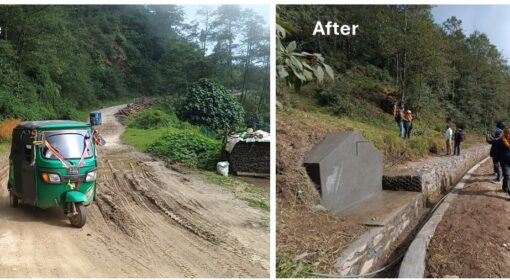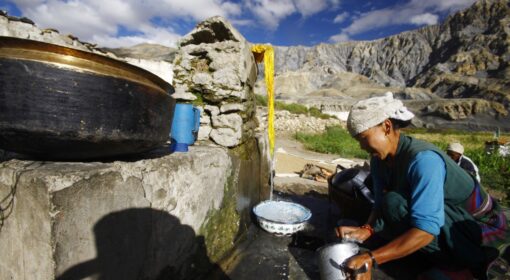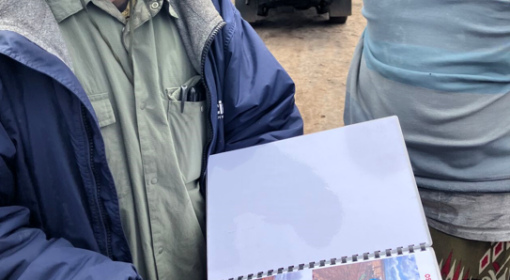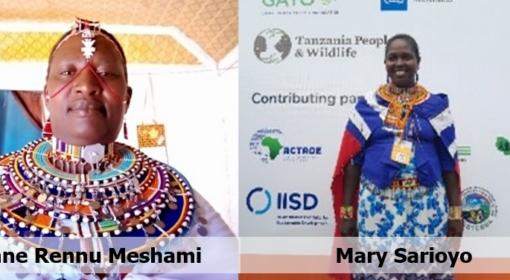Reflections by IMPACT (Peter Lengurnet), Musul Community Land (Jackson Nkaiduri), and MetaMeta (Femke van Woesik, Esmee Mulder, Frank van Steenbergen)
This blog is part of a dossier on locally-led adaptation, featuring insights and lessons from the Reversing the Flow (RtF) program. RtF empowers communities in Bangladesh, Burkina Faso, Ethiopia, Kenya, and Sudan to build climate resilience through direct funding and a community-driven, landscape approach.
IMPACT Reversing the Flow program baseline video: https://www.youtube.com/watch?v=nZ7OMG86Khg
Baselines are part of many development endeavors. They document the zero situation and allow later revisiting to objectively see what change has occurred, if any. They are a good practice in development management.
Yet beyond these basic good practices, we may ask some fundamental questions, like who is measuring what? Whose indicators matter? In fact, do indicators matter? Who shares what with whom and how? Also, can the baseline be more than an instrument for monitoring, and can it be an asset in locally-led development, too?
Many development project baselines focus on measurable indicators such as household income, family wealth, green matter, soil health, water discharge, and more. The baselines are primarily used by implementing organizations and are externally defined. They are captured in writing and not much shared typically beyond the donor organization that commissioned them. Though they may provide much of the primary information, it is unusual for baselines to be shared with the local communities.
However, when considering a locally-led development approach, it is crucial to question the inclusivity of these studies and whom they serve. When an implementing organization designs the baseline, selects indicators, and sets up monitoring systems, it decides what program success looks like. This control over information and its interpretation limits “community-led and ownership,” as they are the only organization (along with the donor) that can access or understand the data to detect change.
As part of the Reversing the Flow program, MetaMeta, RVO, and the local Kenyan NGO IMPACT Kenya explored a different baseline approach, one that centered on the views and aspirations of the local community and stakeholders. This blog shares our reflections, which are divided into two sections: Baseline Arrangements and Setup and Baseline Methods.
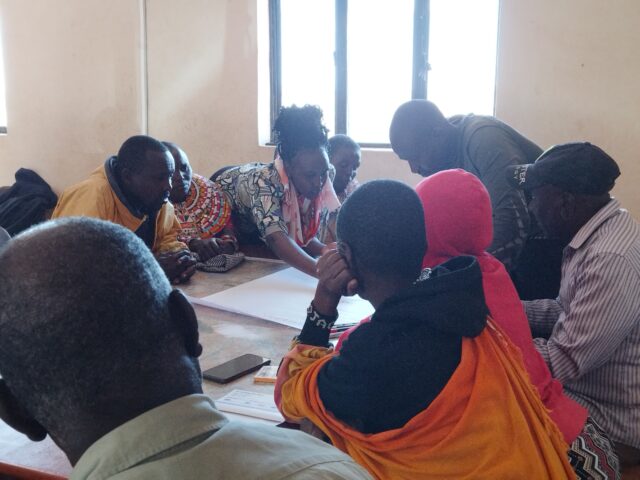
Conducting the baseline: community meetings
Baseline arrangements and set up
The baseline aimed to understand the landscape’s status quo and define program success according to the local communities. To make this happen, RVO contracted external parties (among which MetaMeta) as a support team to work together with IMPACT. The focus was on community aspirations, challenges, and skills gaps. Next, the baseline team discussed that it would be helpful at the program level to map the current natural resources (water specifically according to the ToR) to get an overview of the current state. This would also be helpful for all stakeholders and communities in the landscape that did not have such an overview either.
Learnings:
- Earlier community involvement: The community was not fully involved in setting up the baseline. It took a while to agree on the aim of the baseline: capturing aspirations (rather than data), creating an understanding of and among the different actors in the same landscape, and creating an easy-to-understand, relatable map as part of the baseline that is useful for the various communities discussing the landscape. Learning here is that properly involving communities and the right community groups requires time, which should be taken into account in the planning of monitoring activities. The overall process is best led by local organizations, in this case IMPACT. External parties should be service providers in this process.
- The essence of stakeholder mapping: Thorough stakeholder mapping requires time but is essential to capture all thoughts and engage everyone in the landscape. This is itself a useful part of locally-led development.
- Influence of timing: The baseline was conducted during a drought, which influenced short-term focused aspirations. In the end, a baseline is a moment in time. Timing significantly impacts the outcomes and should be considered. One needs to be aware of the timing and the special conditions that were present at the time, as these factors can heavily influence the results. Start by thoroughly understanding the context in which the baseline was conducted and identify any unusual or significant events, such as natural disasters, economic downturns, or political instability, that could have affected the responses. When reporting findings, be transparent about how these factors may have influenced the baseline, ensuring right interpretation and informed decision-making.
- Donor expectations: Though the Reversing the Flow is a locally-led program, the donor has specific objectives. In this case, Reversing the Flow aims to contribute to improved water security and enhanced climate resilience. The donor has also designed the program in accordance with a landscape approach. These frameworks might limit the freedom for the communities in their priority setting.
Baseline methods
The baseline methods involved community meetings for open discussions on landscape challenges and aspirations. To make the baseline accessible to the communities, the team used video recordings. Community members shared their thoughts in their language, and key locations were filmed for reference. The final video captured different perspectives, providing a comprehensive view of the landscape’s challenges and aspirations across the three wards.
More than a year later, we found that the film is actively used for learning, especially by neighbouring communities. The comprehensive 10-minute video offers a landscape-wide overview, while shorter videos made by the communities support ongoing learning and are shared to inspire similar activities. Community members capture, watch, and share these videos on their phones, often making comments on what needs to be corrected. These videos serve as valuable resources and the community aspires to preserve them for future generations.
Learnings:
- Prior community consultations for meeting set up: Prior consultations with the communities were essential to consult them on the best meeting places and who to invite, making the community meetings more successful.
- Guiding questions: Having guiding questions helped initiate the discussion and collect more information from the meetings.
- Using videos instead of reports is successful: Video recordings in the local language ensure accessibility and ongoing utility of baseline data for the communities. Creating one video helped develop a comprehensive landscape overview, and shorter videos support ongoing learning on specific activities.
- The video recording combined landscape planning (aspirations) and taking stock of the current situation. For a baseline to be instrumental for monitoring and results measurement, it is important to map (the status of) resources and record challenges so one can look back at this starting point later on.
Although video recordings provide visual insights and stories of communities involved, it is also necessary to add information to be complete on the specific data of the area. Most of this has been captured in maps. An evaluation of all the baseline data is needed after a period of time when you have learnt more on what is needed.
Additionally, the videos can be a valuable tools for everyone involved in the program. Communities can use them to guide discussions before, during, and after projects, helping to communicate their needs and track progress. (Local) NGOs can leverage the videos for awareness campaigns, training, and sharing best practices with other groups. For donors, these videos offer a transparent and compelling way to monitor the use of funds and the progress of the projects they support.
This innovative baseline approach in the Reversing the Flow program underscores the importance of inclusive, community-driven development practices. Traditional clinical baselines may not only fail to capture community voices but also make community objects of development rather than the central actors. By having local communities lead the baseline and using accessible methods like video recordings, we gather richer, more relevant data with a larger impact right from the beginning.
Rethinking traditional baseline methods to be inclusive enhances the relevance and impact of interventions and empowers communities to shape their futures.
See the box below for a quick reference on how to do a baseline based on the learnings from this blog.
| How to do a baseline: Define objectives clearly
Involve community early
Stakeholder mapping
Consider time and context
Set Up Community Meetings:
Use Accessible Methods:
Regular review and feedback:
Leverage the baseline for learning and development:
|
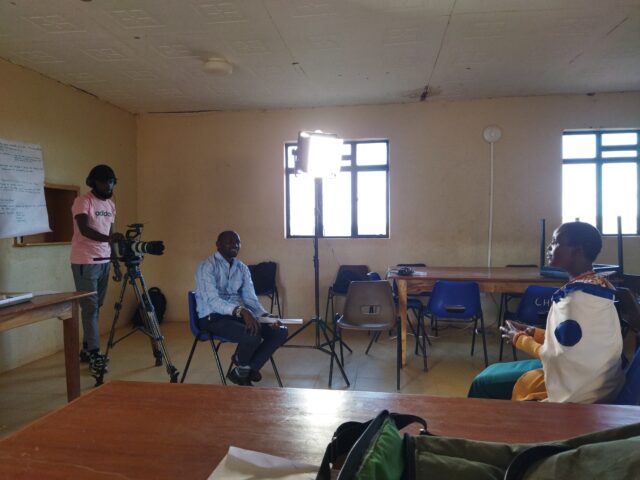
Conducting the baseline: video recordings
